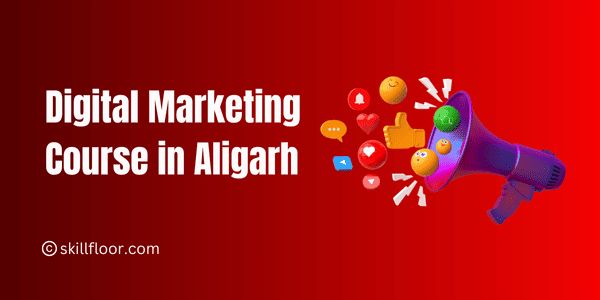What Are Some Digital Marketing Ideas?
The effective digital marketing ideas to boost your brand. From content marketing to video and SEO, learn strategies that drive engagement and results.

Nowadays in a crowded online world, having just a website or social media isn’t enough. With so many brands competing for attention, it’s tough to stand out and be noticed by potential customers. That’s where digital marketing comes in.
From my experience, I’ve seen how the right strategies can really change things for a business, bringing in more engagement, leads, and sales. But what are these strategies? What digital marketing ideas can make a real difference?
Whether you’re an experienced marketer looking to improve or a business owner exploring new ideas, I’m here to share some effective digital marketing techniques to help boost your brand.
Choosing the Right Techniques
With so many digital marketing Techniques out there, it can be hard to choose the right ones. Not every strategy fits every business, and what worked before might not work now. The digital environment keeps changing, with new tools and rules emerging constantly.
For businesses with limited budgets and resources, it’s important to focus on strategies that offer the best return on investment (ROI). Instead of chasing every new trend, pick the tactics that align with your goals and audience.
So, what are some of the most effective digital marketing ideas that can help your business grow?
Let’s explore some digital marketing ideas that I’ve found particularly effective. I’ll explain why they work and how you can tailor them to fit your business needs.
1. Content Marketing: Sharing Valuable Information
Content marketing is a powerful tool. It’s more than just writing blog posts—it’s about creating valuable, relevant content that resonates with your audience and shows that your brand knows what it’s talking about.
Why It Works
People are constantly looking for information online, and they value content that helps them solve problems or answers their questions. When you provide useful content, you build trust with your audience. This trust is what makes people more likely to choose your brand over others.
How to Implement
-
Start a Blog: Add a blog to your website where you regularly post articles that address your audience’s interests or concerns. For example, if you’re in the fitness industry, you could write about workout tips, nutrition advice, or product reviews.
-
Diversify Your Content: Don’t just stick to writing. Try creating videos, infographics, or podcasts to reach different types of people.
-
Optimize for Search Engines: Make sure your content is easy to find on search engines like Google. Use relevant keywords, clear titles, and internal links to boost your ranking and attract more visitors.
2. Social Media Marketing: Connecting With Your Audience
Social media platforms are where people hang out and talk about things that matter to them. These platforms are not just for chatting—they’re powerful tools for building your brand and engaging with customers.
Why It Works
Social media allows you to interact with your audience in real time. It’s where you can show the human side of your brand, share your values, and build a loyal community. The key is to engage with your audience, not just push out marketing messages.
How to Implement
-
Choose the Right Platforms: Focus on the social media platforms where your audience spends most of their time. For example, LinkedIn is great for business-to-business (B2B) companies, while Instagram is better for brands with strong visual content.
-
Plan Your Posts: Create a content calendar to ensure you’re posting regularly and consistently. Mix up your content—share promotional posts, educational tips, and fun, engaging content.
-
Interact with Your Followers: Don’t just post and leave—respond to comments, join relevant conversations, and use features like polls and live videos to interact with your audience.

3. Email Marketing: Building Personal Relationships
Email marketing is still one of the most effective digital marketing strategies. It allows you to communicate directly with people who are interested in your brand.
Why It Works
People who sign up for your emails are already interested in what you have to offer. This makes email marketing a powerful way to nurture leads and build long-term relationships. Plus, it’s easy to track how your emails are performing so you can improve them over time.
How to Implement
-
Grow Your Email List: Encourage people to sign up for your emails by offering something valuable, like a free guide, discount, or exclusive content.
-
Segment Your Audience: Divide your email list into smaller groups based on things like demographics, purchase history, or how engaged they are with your emails. This allows you to send more personalized and relevant emails.
-
Create Compelling Emails: Make sure your emails are well-designed, clear, and focused on providing value. Include a clear call to action (CTA) that tells readers what to do next.
4. Search Engine Optimization (SEO): Getting Found Online
SEO is all about making sure your website shows up when people search for things related to your business. It’s a long-term strategy, but when done right, it can bring a lot of free, organic traffic to your site.
Why It Works
Most people start their online experience with a search engine like Google. If your website doesn’t appear on the first page of search results, it’s unlikely that people will find you. SEO helps ensure your website is visible to your target audience.
How to Implement
-
Keyword Research: Find out what keywords your audience is searching for. Use tools like Google Keyword Planner to find keywords that have a good balance of search volume and competition.
-
Optimize Your Website: Make sure your website is optimized for the keywords you’ve chosen. This includes updating your titles, descriptions, headers, and content. Also, ensure your site works well on mobile devices since many people search on their phones.
-
Build Backlinks: Get other reputable websites to link to your site. This not only drives traffic but also tells search engines that your site is trustworthy and authoritative.
5. Pay-Per-Click Advertising (PPC): Quick, Targeted Traffic
PPC advertising allows you to place ads on search engines, social media, or other websites, paying only when someone clicks on your ad. It’s a quick way to drive traffic to your site, especially if you’re targeting competitive keywords.
Why It Works
PPC is highly targeted, so you can reach exactly the audience you want. Plus, because you only pay when someone clicks on your ad, it’s a cost-effective way to drive traffic and leads.
How to Implement
-
Choose the Right Platform: Google Ads is the most popular PPC platform, but social media platforms like Facebook and LinkedIn also offer robust advertising options. Choose the platform that aligns best with your audience and goals.
-
Create Compelling Ads: Your ads need to grab attention and offer something valuable. Focus on crafting strong headlines, clear CTAs, and relevant landing pages that encourage conversions.
-
Monitor and Adjust: PPC campaigns require regular monitoring and tweaking. Keep an eye on your performance metrics, such as click-through rates and conversions, and adjust your strategy as needed.
6. Influencer Marketing: Partnering with Trusted Voices
Influencer marketing involves working with people who have a significant following and influence in your target market. By partnering with these influencers, you can boost your brand’s visibility and credibility.
Why It Works
Influencers have built trust with their audience, so their recommendations carry weight. When an influencer endorses your product or service, it feels more authentic to their followers, which can greatly enhance your brand’s image.
How to Implement
-
Find the Right Influencers: Look for influencers who align with your brand and have an audience that matches your target market. Tools like BuzzSumo can help you find influencers in your industry.
-
Build Genuine Relationships: Approach influencer marketing as a partnership, not just a transaction. Build authentic relationships by engaging with their content and collaborating on creative campaigns that resonate with their audience.
-
Measure Success: Track the performance of your influencer campaigns by looking at metrics like engagement, reach, and conversions. This helps you understand the ROI and improve future campaigns.
7. Video Marketing: Telling Your Story Visually
Video content is incredibly engaging and one of the best ways to tell your brand’s story. Whether it’s through explainer videos, product demos, or customer testimonials, video marketing helps you connect with your audience in a powerful way.
Why It Works
Videos are more engaging than text or images alone, and platforms like Facebook and Instagram favor video content. They’re also highly shareable, which means they can significantly increase your brand’s reach.
How to Implement
-
Create Quality Videos: Invest in creating high-quality video content that reflects your brand’s message and values. This could include product demos, tutorials, or behind-the-scenes content.
-
Leverage YouTube and Social Media: YouTube is the second-largest search engine, making it a key platform for video content. Additionally, share your videos across your social media channels to maximize visibility.
-
Use Video SEO: Optimize your videos for search engines by including relevant keywords in your video titles, descriptions, and tags. Also, consider adding transcripts to improve accessibility and SEO.
8. Retargeting: Bringing Back Interested Visitors
Retargeting involves showing ads to people who have previously interacted with your brand but didn’t make a purchase. This could include website visitors or video viewers who haven’t yet converted.
Why It Works
Retargeting keeps your brand top of mind for potential customers who have already shown interest in what you offer. It’s a way to remind them of what they’re missing out on, often at a lower cost than trying to attract new leads.
How to Implement
-
Set Up Retargeting Campaigns: Use platforms like Google Ads or Facebook Ads to set up retargeting campaigns. These platforms allow you to target specific audiences based on their interactions with your brand.
-
Offer Incentives: To encourage conversions, offer something extra in your retargeting ads, like a discount or a special offer.
-
Monitor and Adjust: Continuously monitor the performance of your retargeting campaigns. If certain segments aren’t converting, adjust your messaging or offer to better suit their needs.
9. Customer Reviews and Testimonials: Building Trust Through Social Proof
Customer reviews and testimonials are powerful tools in building trust and credibility for your brand. Positive reviews can significantly influence potential customers’ decisions.
Why It Works
When potential customers see that others have had a positive experience with your brand, they’re more likely to trust you and make a purchase themselves. This is known as social proof.
How to Implement
-
Encourage Reviews: Ask satisfied customers to leave reviews on platforms like Google My Business, Yelp, or industry-specific sites. Make it easy by providing direct links or simple instructions.
-
Feature Testimonials: Showcase customer testimonials on your website, social media, and marketing materials. Consider creating video testimonials for even greater impact.
-
Respond to Reviews: Whether positive or negative, always respond to reviews. This shows that you value your customers’ feedback and are committed to improving their experience.
10. Interactive Content: Engaging Through Participation
Interactive content, such as quizzes, polls, and surveys, invites your audience to actively participate rather than just passively consume your content. This can significantly increase engagement and help you gather valuable insights about your audience.
Why It Works
Interactive content is engaging because it involves the audience directly. It also allows you to collect data and insights, which can be used to further tailor your marketing efforts.
How to Implement
-
Create Quizzes and Polls: Use tools like Typeform or SurveyMonkey to create quizzes, polls, or surveys that are relevant to your audience.
-
Add Interactive Elements to Your Website: Incorporate elements like calculators, assessments, or chatbots to your website to enhance the user experience.
-
Promote Interactive Content: Share your interactive content on social media and through email marketing to drive engagement and attract new leads.
Digital marketing offers a wide range of strategies to help your business grow. From content marketing to interactive content, the key is to choose the tactics that best align with your goals and audience.
Remember, the most effective digital marketing strategies are not about doing everything but about doing the right things consistently. Test different approaches, measure your results, and be ready to adapt to changes in the digital landscape. By staying curious and open to new ideas, you’ll be well-equipped to navigate the ever-changing world of digital marketing.




























































